Aguascalientes
| Aguascalientes Estado Libre y Soberano de Aguascalientes |
|||
|---|---|---|---|
| — State — | |||
|
|||
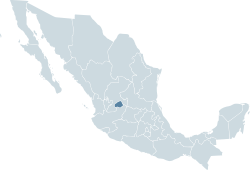 |
|||
 |
|||
| Country | |||
| Capital | Aguascalientes | ||
| Municipalities | 11 | ||
| Largest City | Aguascalientes | ||
| Admission | February 5, 1857[1] | ||
| Order | 24th | ||
| Government | |||
| - Governor | Luis Armando Reynoso Femat | ||
| - Federal Deputies | PAN: 3 | ||
| - Federal Senators | PAN: 2 PRI: 1 |
||
| Area Ranked 28th |
|||
| - Total | 5,471 km2 (2,112.4 sq mi) | ||
| Population (2005) | |||
| - Total | 1,065,416 (Ranked 27th) | ||
| Time zone | CST (UTC-6) | ||
| - Summer (DST) | CDT (UTC-5) | ||
| HDI | 0.844 - high Ranked 11th |
||
| ISO 3166-2 | MX-AGU | ||
| Postal abbr. | Ags. | ||
| Website | Aguascalientes state government | ||
Aguascalientes (Spanish pronunciation: [ˈaɣwas kaˈljentes] (![]() listen)) is a state of Mexico, situated in the center of the country. The name means "hot waters" in Spanish and originated from the abundance of hot springs in the area, the corresponding adjective for the state and its inhabitants is aguascalentense. The state capital is the city of Aguascalientes.
listen)) is a state of Mexico, situated in the center of the country. The name means "hot waters" in Spanish and originated from the abundance of hot springs in the area, the corresponding adjective for the state and its inhabitants is aguascalentense. The state capital is the city of Aguascalientes.
Contents |
Geography

The state is located about 300 miles (480 km) from Mexico City.
It covers 5,471 square kilometers (2,112.4 sq mi) and has a little more than one million inhabitants. Most of its inhabitants live in the densely populated metropolitan area of its capital city.
The state as it is now was created on October 27, 1857 when it was separated from Zacatecas. It bears the name Aguascalientes taken from its largest city and capital also called Aguascalientes.
Economy and industry
This state originated around the times of colonial Spanish influence. It is located in the middle of the country and is now beginning to make a name for itself as an industrial power within Mexico. The state was once a major silver miner and a major source of railroad transportation, the latter due to its strategic location, midway between the three most populous areas, namely Mexico City, Guadalajara, and Monterrey.
In the rural area, Aguascalientes was once the largest national producer of grapes and wines. This tradition ceased gradually due to the Spanish Royalty's wishes that grape and wine production be limited to the mother country. Thanks to the influx of immigrants into Mexico, the wineries and vineyards remain and flourish. Guavas are also produced in the state.
There are several projects for economic development such as : the Financial District Rio San Pedro, a monorail, a suburban train, the construction of the newest and most modern WTC in Mexico, over four shopping malls, two theme parks, two Executive Hotels and one whose qualification is five stars, eight bridges for the next five years, a Financial District around the Airport, A Texas Instruments Assembly-Test Plant, A Nissan Assembly plant, a Toyota assembly plant and several others projects place Aguascalientes as the third most competitive state in Mexico with more than US$12,000,000 in foreign direct investment per year (around 8 percent of Mexico's FDI) even though its population is just about 1.03 percent of the country.
However, recently it has also benefited from heavier tourism, since the capital city has gained prestige and status as a national destination for its colonial beauty and cleanliness. In addition, the haciendas and baths around the state have historic and recreational importance.
Tourism
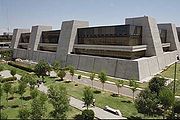
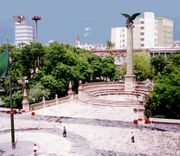
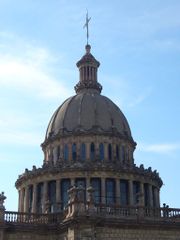
Although this state is not often billed as a tourist center, international visitors, as well as citizens from all over Mexico, are attracted to the San Marcos Fair, which is considered the national fair of Mexico[2] and contributes much to Mexico's economy.
Recently, its capital city has gained the reputation as a great destination for its superb colonial architecture visible in the colonial centre, as well as the modernity and dynamism in the outskirts.
The city is home to Lic. Jesús Terán Peredo International Airport, where 9 flights per day depart to Mexico City, Tijuana, Dallas/Fort Worth and Houston.[3]
The city also hosts many conventions every year. It benefits from its excellent central location. The city is also famed for its environment of relaxation, and for its safety and cleanliness, as it is often described by people when traveling to this part of the country for conventions or tourism.
Most tourists go to the capital. A few tourists explore the former mining towns in the north of the state (in the municipalities of Asientos and Tepezalá), which are now almost ghost cities. The haciendas, hot springs, and baths scattered around the state are also of historical and recreational relevance.
The municipality of Calvillo has a semi-tropical climate, The largest producer of guavas in Mexico,[4] it attracts some fans of watersports to its reservoirs.
The state has a Natural Protected Reserve in the higher mountains called Sierra Fría. Located at a height of 2,500 to 3,000 meters (8,200–9,850 ft) above sea level, it comprises oak and pine forests. Its attractions include observing exuberant landscape and wide ravines, in which, there are pumas, lynxes, boar, white-tailed deer, wild turkey, raccoons and many other animals. There are steep-sided cycle paths, camping and picnic areas as well as several hunting clubs. It is the mountain climate and fauna that attracts locals for camping activities. In winter, the temperature sometimes falls to -4.44°C (24°F) below zero when the weather is poor. Usually, Sierra Fria is the only part of the state that gets snow during winter.
In the city of Aguascalientes one of the best sunsets in the world can be seen in the Cerro del Muerto; the hill resembles the shape of a man lying down. The city of Aguascalientes is called "el corazón" which means "the heart" of Mexico because it lies in the middle of the country. This city is often considered, by its locals, to be one of the safest and cleanest in Mexico. Also, the city of Aguascalientes is known as "the land of the good people".
Sports
At present, the state has one football team in the Mexican Premiere League, (Club Necaxa) and one professional basketball team (Las Panteras The Panthers).
Necaxa recently (Dec. 2009) won the first half season of the Second-Division tournament, if they win the second half also they will be automatically promoted to the First-Division, if not, they will have a playoff (Home and Away) with the team who wins the second half to see who is promoted.
Municipalities
Aguascalientes is subdivided into 11 municipios ("municipalities").
Major communities
|
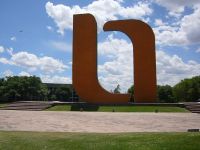
Universidad Autonoma de Aguascalientes.
|
Trivia
In the Western For A Few Dollars More, starring Clint Eastwood, Aguascalientes is the place where Eastwood and the bandidos escape from their bank robbery.
In the movie Fools Rush In starring Salma Hayek and Matthew Perry, Salma's character establish that her hometown is Aguascalientes, although she says that is located in central Mexico, the referred place could be Aguas Calientes la Mata, in the Municipality of Asunción Ixtaltepec (Oaxaca).
Famous Hidrocálidos
- See also articles in the category People from Aguascalientes
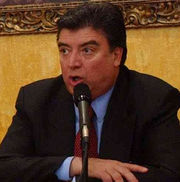
- José María Bocanegra, third President of Mexico
- Saturnino Herrán, artist
- Manuel M. Ponce, musician, (born in neighbor state Zacatecas, but family moved to Aguascalientes a few days later).
- Yadira Carrillo,actress
- José Guadalupe Posada, artist
- Jesús F. Contreras, artist
- Sesashi Guerrero Pérez, Rhythmic Gymnast, Contemporary dancer, Gymnastics Trainer,[5]
- Violeta Retamoza, professional golfer
- José Antonio Zapata, journalist
- Iyérida Mogollón Martin, Elite Gymnast
- Luz Helisabet Delgado, Wife of Joshua Ingraham
- Monica Del Real, Tae Kwon Do medalist
- Jose Maria Napoleon, singer from late seventies to early eighties
- David Reynoso, actor
References
- ↑ "Gobierno del Estado de Yucatán" (in Spanish). http://www.yucatan.gob.mx/servicios/c_civico/fechas.jsp?mes=2.
- ↑ http://www.worldreviewer.com/travel-guides/festival/san-marco-national-fair/11107/
- ↑ Grupo Aeroportuario del Pacifo
- ↑ http://www.mexconnect.com/articles/3559-december-guava-fair-in-calvillo-aguascalientes
- ↑ http://www.noroeste.com.mx/publicaciones.php?id=521313
External links
- (Spanish) Aguascalientes state government
- Pictures of Aguascalientes Photo set of the City of Aguascalientes
- Aguascalientes Touristic website
|
||||||||||

